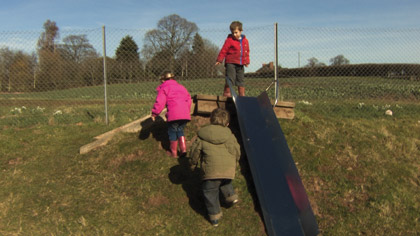1.1 What does play mean?
Based in Oakland, California, USA, Julie Nicholson and her colleagues interviewed 98 school pupils (most between the ages of three and ten, but some were teenagers) about their perspectives on both children’s and adults’ play. The majority of these children were living in economically distressed urban environments. The impetus for the research arose from a wish to listen to the voices of children, given that most published writing about children’s play reflects adults’ perspectives on children’s play, rather than children’s views.
Describing what play meant for her, seven-year-old Angelica seems to capture something essential not just for herself but adults too; she stated, ‘Play is having fun for the rest of your life.’ And four-year-old Yenee commented, ‘Play means you have to play from some house with toys or peoples.’

The researchers found that children often associated play with toys and games and saw play to be very much part of their social interactions and relationships with other children. Laughing and having fun featured strongly, as did being able to choose how they played and what they played with.
Many of the older children interviewed also expressed clear ideas about how adults might play. According to a number of children, the primary form of adult play was adults playing with their own children. One child, Jose (aged nine), felt he had to encourage his mother to play with him. Others recognised that adults might play sports and games of their own kind – cards, soccer, or a game on their phone. Neela (aged eleven), widened things by saying:
I think they play with their friends ... not exactly the same way we play ... their play probably is talking, going to lunch maybe, going shopping, um, at night-times, going to people’s houses, eating, talking about grownup stuff.
These seem to be astute suggestions, coming from a young person, about the possibility of play in an adult’s world. It could be argued that playful thinking is visible in a design such as that of the ‘Gherkin’ skyscraper in London, designed by Norman Foster and Ken Shuttleworth and later nicknamed the ‘Gherkin’ because of its unique shape.

Nicholson et al. (2014, p. 150) concluded that many children had ‘profound comments to make about why play was important to their own lives’. Through their study, the researchers came to believe that children can in fact cause adults to stop and think, to pause in their busy lives, and to reconsider their personal beliefs and actions that can affect their children’s lives. Listening to children in order to better understand their perspectives on play and playing, the researchers urge, is an essential dimension of respecting children’s human rights to be heard and for their opinions to be respected (United Nations, 1989). The Italian philosopher and founder of Reggio Emilia nurseries, Loris Malaguzzi, reminds us in his poem, ‘No way. The hundred is there’, that children are born ‘with a hundred languages’ (Gandini, 1998). Even before they are talking, babies are subtly communicating their feelings, perspectives and ideas about the world with those nearest to them, and, of course, it can be a challenge for adults to learn how to respond to the pre-linguistic sounds and expressions of babies.
As you read the different accounts of children’s perspectives on play in the following sections, reflect on these and think about the various ways in which children share their views.
